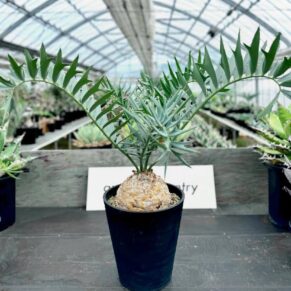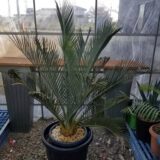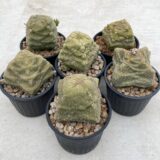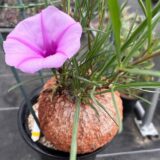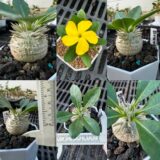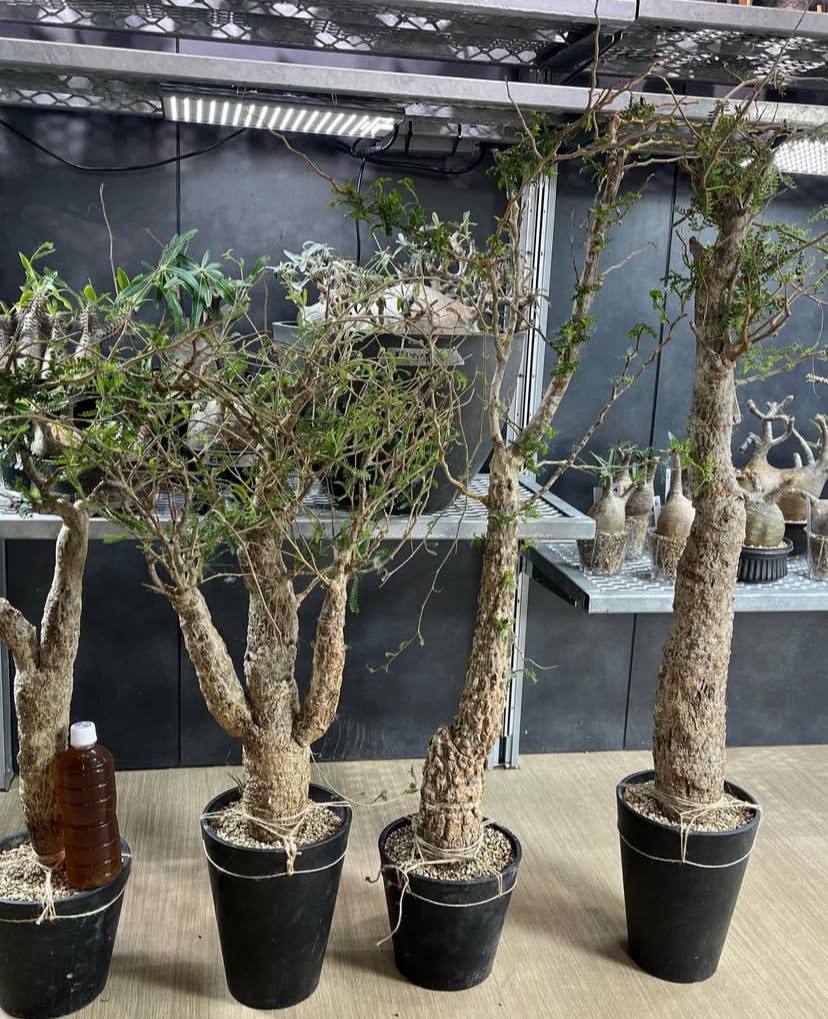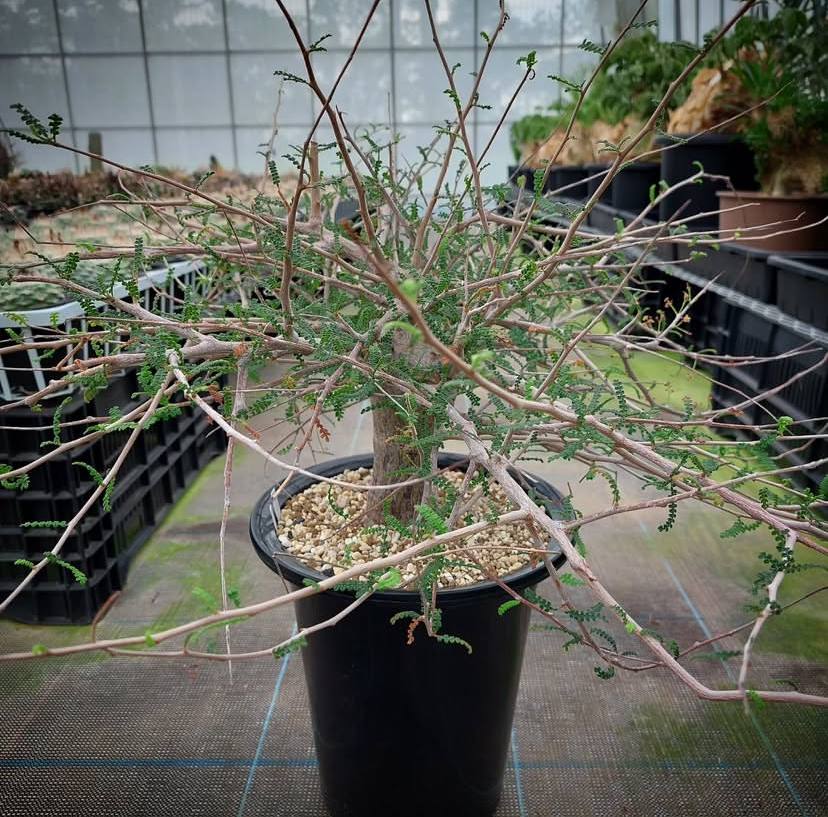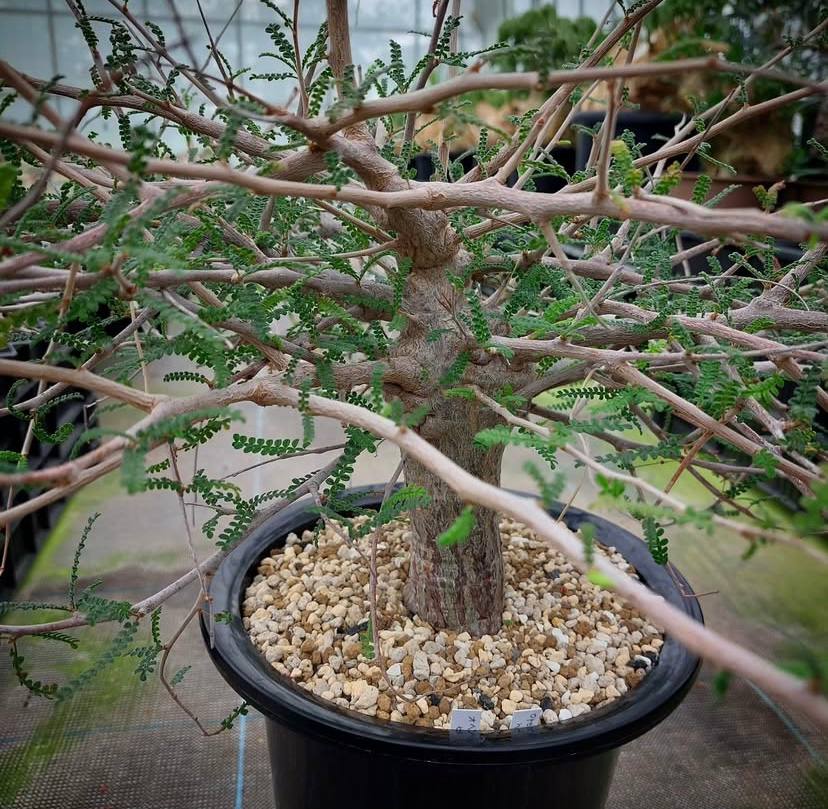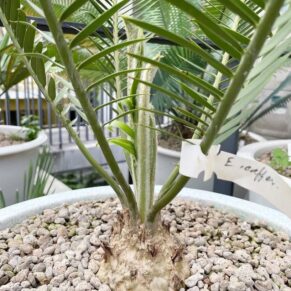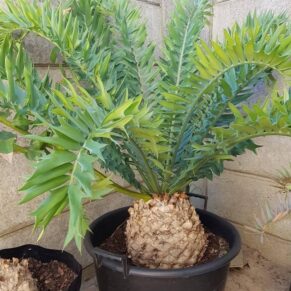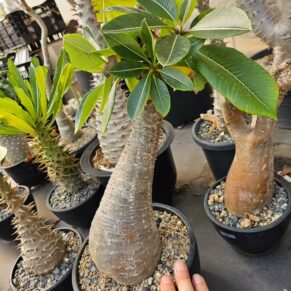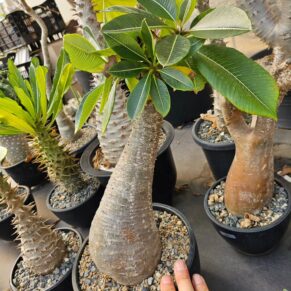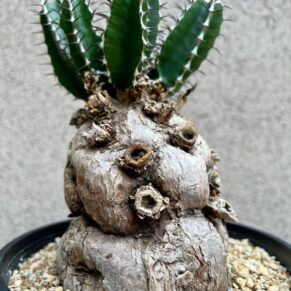Total $550.00
Shop
Operculicarya hyphaenoides
$100.00 – $300.00
Discover expert tips on growing and caring for Operculicarya hyphaenoides. Learn how to cultivate this unique, drought-tolerant plant in your garden or home.Shope your operculicarya hyphaenoides from:caudexplants.com

size
Choose an option
Add to cart
Buy Now
A Complete Guide to Growing and Caring for Operculicarya Hyphaenoides
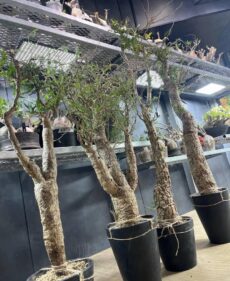
Operculicarya hyphaenoides, a unique and fascinating plant in the family Anacardiaceae, is well-regarded for its distinctive appearance and hardy nature. Native to Madagascar, hyphaenoides has a thick, caudiciform stem that stores water, making it an excellent choice for succulent enthusiasts or those interested in drought-tolerant plants. In this comprehensive guide, we’ll explore everything you need to know about Operculicarya hyphaenoides, from its ideal growing conditions to tips for care and maintenance, helping you successfully grow and nurture this remarkable plant.Buy your operculicarya at:caudexplants.com
What Is Operculicarya Hyphaenoides?
Operculicarya hyphaenoides is a small to medium-sized shrub with a highly unique appearance. This plant features a swollen, water-storing trunk known as a caudex, which is a common characteristic in many succulent plants. The caudex serves as a reservoir, helping the plant survive in arid conditions. As it matures, O hyphaenoides develops attractive, compound leaves, which give the plant a distinct and tropical aesthetic. Its small, yellowish flowers bloom infrequently but add an extra layer of charm when they do Buy your operculicarya at:caudexplants.com
When considering how to grow hyphaenoides, understanding the plant’s characteristics is crucial. This slow-growing plant is particularly suitable for those who appreciate low-maintenance, drought-tolerant species. By providing the right care, you can allow Operculicarya hyphaenoides to flourish and become a conversation piece in your garden or home.Buy your operculicarya at:caudexplants.com
Choosing the Right Location for Operculicarya Hyphaenoides
When learning how to grow Operculicarya hyphaenoides, one of the first considerations is selecting the right location. As a native of Madagascar, hyphaenoides thrives in bright, sunny spots. It requires at least 6 hours of direct sunlight daily to grow well. Whether you’re planting it in a garden or a pot, make sure the location has sufficient light. Indoors, place the plant near a south- or west-facing window to ensure it gets the necessary exposure to sunlight.Buy your operculicarya at:caudexplants.com
Outdoor planting should ideally be done in well-draining soil. Operculicarya hyphaenoides can tolerate some degree of heat and dryness, making it perfect for xeriscaping or arid garden designs. In regions with cooler winters, it’s advisable to grow Operculicarya hyphaenoides in a container so it can be brought indoors during the colder months to prevent frost damage.Buy your operculicarya at:caudexplants.com
Soil Requirements for Operculicarya Hyphaenoides

O hyphaenoides thrives in well-draining soil, which is critical to prevent waterlogging and root rot. This plant naturally grows in dry, rocky, or sandy soils in its native environment, and mimicking this condition is key to its success in cultivation. If planting hyphaenoides in the ground, amend your soil with sand, perlite, or grit to improve drainage.Buy your operculicarya at:caudexplants.com
For container growth, a cactus or succulent mix works best. You can also create your own mix by combining regular potting soil with sand and perlite. When learning how to grow hyphaenoides, remember that the root system of this plant prefers to dry out between waterings, so proper drainage is crucial to keeping it healthy.
Watering Needs of Operculicarya Hyphaenoides
The watering needs of O hyphaenoides are relatively simple to manage once you understand the plant’s requirements. Since it is a drought-tolerant succulent, O hyphaenoides does not need frequent watering. The key to how to grow hyphaenoides successfully is to water it thoroughly but infrequently. Allow the soil or potting mix to dry out completely between waterings to prevent root rot.Buy your operculicarya at:caudexplants.com
During the growing season, typically in spring and summer, water your O hyphaenoides once every 2-3 weeks. In winter, when the plant enters dormancy, reduce watering even further, as the plant requires minimal moisture during this time. Always check the soil moisture level before watering, and avoid leaving standing water in trays or pots. Buy your operculicarya at:caudexplants.com
Light and Temperature Requirements for Operculicarya Hyphaenoides

Light is a critical factor in how to grow Operculicarya hyphaenoides effectively. This plant needs full sun to thrive, making it ideal for sun-drenched spots in your garden or a bright, sunny windowsill indoors. If grown in low light conditions, O

hyphaenoides may become leggy and weak, and it may not produce as many healthy leaves or flowers.Buy your operculicarya at:caudexplants.com
In terms of temperature, O hyphaenoides prefers warm, tropical conditions. It thrives in temperatures ranging from 65°F to 85°F (18°C to 29°C). If grown outdoors, protect the plant from frost, as it is not cold-hardy. For those growing it in temperate climates, bringing the plant indoors during the winter months is essential to prevent cold stress.
Fertilizing Operculicarya Hyphaenoides for Optimal Growth
Fertilizing O hyphaenoides is not strictly necessary, but it can help the plant grow stronger and healthier. If you wish to encourage more vigorous growth, you can feed your hyphaenoides during the growing season with a diluted, balanced fertilizer. Apply a balanced fertilizer once a month, starting in spring and continuing through summer. It is important to avoid over-fertilizing, as this can lead to excessive leaf growth and weaken the plant’s resilience to drought.Buy your operculicarya at:caudexplants.com
If you’re growing hyphaenoides in poor soil or a pot with minimal nutrients, fertilization can be especially helpful. In the winter months, when the plant is dormant, refrain from fertilizing, as the plant does not actively take up nutrients during this period.
Pruning and Maintenance of Operculicarya Hyphaenoides
O hyphaenoides requires minimal pruning, but occasional maintenance can help keep it in good shape. During the growing season, you may notice some leggy growth or unwanted branches. You can remove any dead or damaged stems to maintain the plant’s appearance. Be careful not to remove too much of the caudex, as it stores essential water for the plant.
In general, pruning Operculicarya hyphaenoides is more about aesthetic maintenance than encouraging growth, as this plant tends to grow slowly and doesn’t require regular cutting back. It’s essential to inspect your plant for any signs of pests or disease while pruning to ensure it remains healthy.
Pests and Diseases of Operculicarya Hyphaenoides
Although hyphaenoides is relatively pest-resistant, it may occasionally face issues with pests like aphids or mealybugs. These pests are most commonly found on the plant’s stems and leaves. If you notice small, discolored spots or sticky residues on the plant, inspect it closely for pests. Neem oil or insecticidal soap can help to control minor infestations. For more severe cases, it may be necessary to remove heavily affected leaves and treat the plant with a stronger pesticide. Buy your operculicarya at:caudexplants.com
Fungal diseases are less common with hyphaenoides, but they can occur if the plant is kept in overly humid or wet conditions. To prevent fungal infections, make sure the plant is grown in well-draining soil and avoid overhead watering, which can cause moisture to linger on the plant’s leaves.Join facebook group to interact with other caudexplants enthusiasts;Facebookgroup
Propagation of Operculicarya Hyphaenoides
Propagation of hyphaenoides is best done through cuttings. Take a healthy stem cutting, ensuring that it includes a portion of the caudex, which will help the cutting develop its own water-storing trunk. Allow the cutting to callus over for a few days before planting it in a well-draining succulent mix. Keep the cutting in a warm, sunny location until roots begin to form, which may take several weeks.
Alternatively, hyphaenoides can be propagated from seed, although this method is more time-consuming. If you choose to propagate by seed, it is recommended to start seeds in a moist, warm environment. Seeds should be sown in a shallow tray and kept at temperatures of around 70°F (21°C) until germination occurs. Once seedlings are large enough, they can be transplanted into individual pots or garden beds.
Conclusion: Growing Operculicarya Hyphaenoides in Your Garden
Operculicarya hyphaenoides is a remarkable plant that can make an excellent addition to any garden or indoor space. With its unique caudiciform trunk, drought tolerance, and minimal care requirements, hyphaenoides is ideal for both beginner and experienced gardeners alike. By following the tips outlined in this guide, you can create an optimal growing environment for your hyphaenoides and enjoy its beauty for years to come. Buy your operculicarya at:caudexplants.com

Whether grown in a container on a sunny windowsill or as part of a tropical garden design, hyphaenoides will undoubtedly stand out with its intriguing form and attractive foliage. By understanding how to grow hyphaenoides and caring for it properly, you will ensure that this plant thrives, adding a touch of elegance and uniqueness to your space. Buy your operculicarya at:caudexplants.com
| size | small, medium, large |
|---|

